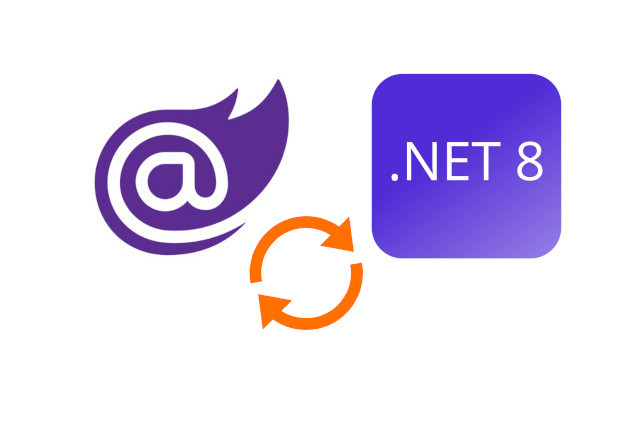Blazor .NET 8 Object Mapping with Mapster

Blazor .NET 8 Object Mapping with Mapster
In a Blazor application, object mapping is a common task that involves converting data from one object type to another. This is often required when working with data transfer objects (DTOs) or when mapping data between different layers of an application. Mapster is a popular mapping library in the .NET ecosystem that provides a simple and efficient way to perform object mapping in Blazor applications.
DTOs: Data Transfer Objects (DTOs) are objects that are used to transfer data between different layers of an application. They typically contain only the necessary properties and are used to reduce the amount of data transferred over the network.
Object Mapping: Object mapping is the process of converting data from one object type to another. It involves copying properties from the source object to the destination object, taking into account any necessary transformations or mappings.
Mapster: Mapster is a lightweight and fast object-to-object mapper for .NET. It provides a fluent API for configuring object mappings and performs the mapping operation efficiently using compiled expressions.
Program.cs
internal class Program
{
private static void Main(string[] args)
{
...
builder.Services.AddMapster();
...
}
}
The AddMapster extension method is added to the IServiceCollection in the Program.cs file. This method is responsible for configuring Mapster and registering the necessary services.
public static class MapsterConfiguration
{
public static void AddMapster(this IServiceCollection services)
{
var typeAdapterConfig = TypeAdapterConfig.GlobalSettings;
Assembly applicationAssembly = typeof(BaseDTO<,>).Assembly;
typeAdapterConfig.Scan(applicationAssembly);
var mapperConfig = new Mapper(typeAdapterConfig);
services.AddSingleton<IMapper>(mapperConfig);
}
}
The MapsterConfiguration class contains the implementation of the AddMapster extension method. Inside this method, the TypeAdapterConfig is retrieved from the GlobalSettings and the application assembly is scanned for mappings.
Finally, an instance of the Mapper class is created with the TypeAdapterConfig and registered as a singleton service in the IServiceCollection.
BaseDTO.cs
The BaseDTO class has two generic type parameters: TDTO and TEntity. These parameters represent the DTO and entity types, respectively. The class constraints ensure that TDTO and TEntity are reference types and have a default constructor.
using Mapster;
namespace BlazorAppObjectMappingwithMapster.Data;
public abstract class BaseDTO<TDTO, TEntity> : IRegister
where TDTO : class, new()
where TEntity : class, new()
{
public TEntity ToEntity()
{
return this.Adapt<TEntity>();
}
public TEntity ToEntity(TEntity entity)
{
return (this as TDTO).Adapt(entity);
}
public static TDTO FromEntity(TEntity entity)
{
return entity.Adapt<TDTO>();
}
private TypeAdapterConfig Config { get; set; }
public virtual void AddCustomMappings() { }
protected TypeAdapterSetter<TDTO, TEntity> SetCustomMappings()
=> Config.ForType<TDTO, TEntity>();
protected TypeAdapterSetter<TEntity, TDTO> SetCustomMappingsInverse()
=> Config.ForType<TEntity, TDTO>();
public void Register(TypeAdapterConfig config)
{
Config = config;
AddCustomMappings();
}
}
ToEntity(): This method converts the current DTO instance to an entity instance using the Adapt method provided by the Mapster library.
ToEntity(TEntity entity): This overloaded method converts the current DTO instance to an entity instance and assigns the values to an existing entity object.
FromEntity(TEntity entity): This static method converts an entity instance to a DTO instance using the Adapt method.
AddCustomMappings(): This method can be overridden in derived classes to add custom mappings using the SetCustomMappings method.
SetCustomMappings(): This method returns a TypeAdapterSetter object that allows for configuring custom mappings between the DTO and entity types.
SetCustomMappingsInverse(): This method returns a TypeAdapterSetter object that allows for configuring custom mappings in the inverse direction (from entity to DTO).
BlogPostViewModel.cs
The BlogPostViewModel class is defined in the BlazorAppObjectMappingwithMapster.ViewModels namespace. It inherits from the BaseDTO<BlogPostViewModel, BlogPost> class, which suggests that it is a data transfer object (DTO) used for mapping between the view and the model.
using BlazorAppObjectMappingwithMapster.Data;
using BlazorAppObjectMappingwithMapster.Models;
using System.ComponentModel.DataAnnotations;
namespace BlazorAppObjectMappingwithMapster.ViewModels;
public class BlogPostViewModel : BaseDTO<BlogPostViewModel, BlogPost>
{
public int Id { get; set; }
[Required(AllowEmptyStrings = false, ErrorMessage = "Title can not be empty")]
public string Title { get; set; } = string.Empty;
[Required(AllowEmptyStrings = false, ErrorMessage = "Content can not be empty")]
public string Content { get; set; } = string.Empty;
public string TitleShort { get; set; } = string.Empty;
public string ContentShort { get; set; } = string.Empty;
public override void AddCustomMappings()
{
// from BlogPostViewModel to BlogPost
SetCustomMappings().Map(dst => dst.Title,
src => src.Title);
// from BlogPost to BlogPostViewModel
SetCustomMappingsInverse().Map(dst => dst.TitleShort,
src => src.Title.Substring(0, Math.Min(src.Title.Count(), 10)))
.Map(dst => dst.ContentShort,
src => src.Content.Substring(0, Math.Min(src.Content.Count(), 50)));
// base.AddCustomMappings();
}
}
In the AddCustomMappings method, we define the custom mappings between the BlogPostViewModel and BlogPost objects.
Index.razor
blogPosts = Mapper.Map<IEnumerable<BlogPost>, IEnumerable<BlogPostViewModel>>(result);
In this code, blogPosts is a variable of type IEnumerable<BlogPostViewModel>, and result is a variable of type IEnumerable<BlogPost>. We use the Mapper.Map method provided by Mapster to perform the object mapping. The method takes two parameters: the source object (result) and the destination type (IEnumerable
Create.razor
// option 1
// var model = blogPost.ToEntity();
// option 2
var model = Mapper.Map<BlogPostViewModel, BlogPost>(blogPost);
bool result = await BlogPostService.AddBlogPostAsync(model);
if (result)
NavigationManager.NavigateTo("/BlogPost");
The first option (blogPost.ToEntity()) is commented out, indicating an alternative approach to object mapping. This option suggests that there might be a custom method ToEntity() defined in the blogPost object that performs the mapping to the desired entity type.
The second option uses the Mapper.Map method provided by the Mapster library. It takes two parameters: the source object (blogPost) and the destination type (BlogPost). It performs the mapping operation and returns an instance of the destination type (model).
Details.razor
// option 1
// blogPost = BlogPostViewModel.FromEntity(result);
// option 2
blogPost = Mapper.Map<BlogPost, BlogPostViewModel>(result);
The first option involves using a static method FromEntity defined in the BlogPostViewModel class. This method takes a BlogPost object as a parameter and returns a BlogPostViewModel object.
The second option utilizes the Mapper class provided by Mapster. This class provides a convenient way to perform object mapping using a fluent syntax.
Delete.razor
// option 1
// blogPost = BlogPostViewModel.FromEntity(result);
// option 2
blogPost = Mapper.Map<BlogPost, BlogPostViewModel>(result);
In first option, we are calling a static method FromEntity defined in the BlogPostViewModel class. This method is responsible for creating a new instance of BlogPostViewModel and mapping the properties from the result object to the corresponding properties in the BlogPostViewModel object.
In second option, we are using Mapster's Mapper class to perform the object mapping. The Map method is a generic method that takes the source object type (BlogPost) and the destination object type (BlogPostViewModel) as type arguments.
Edit.razor
protected override async Task OnInitializedAsync()
{
if (blogPost is null)
{
var result = await BlogPostService.GetbyId(id);
if (result != null)
{
// option 1
// blogPost = BlogPostViewModel.FromEntity(result);
// option 2
blogPost = Mapper.Map<BlogPost, BlogPostViewModel>(result);
}
}
}
private async void HandleValidSubmit()
{
if (blogPost is null) return;
// option 1
// var model = blogPost.ToEntity();
// option 2
var model = Mapper.Map<BlogPostViewModel, BlogPost>(blogPost);
bool result = await BlogPostService.UpdateBlogPostAsync(id, model);
if (result)
NavigationManager.NavigateTo("/BlogPost");
}
The OnInitializedAsync method and check if the blogPost object is null. If it is null, we retrieve the blog post from the BlogPostService using the GetById method. If the result is not null, we perform the object mapping using Mapster’s Mapper.Map method. We pass the source object result of type BlogPost and the destination type BlogPostViewModel. The mapped object is then assigned to the blogPost variable.
The HandleValidSubmit method that is called when the form is submitted and the data is valid. We first check if the blogPost object is null. If it is null, we return. Otherwise, we perform the object mapping using Mapster’s Mapper.Map method. We pass the source object blogPost of type BlogPostViewModel and the destination type BlogPost. The mapped object is then assigned to the model variable. We then call the UpdateBlogPostAsync method of the BlogPostService to update the blog post with the new model. If the update is successful, we navigate to the "/BlogPost" page.
Source
Full source code is available at this repository in GitHub:
https://github.com/akifmt/DotNetCoding/tree/main/src/BlazorAppObjectMappingwithMapster
